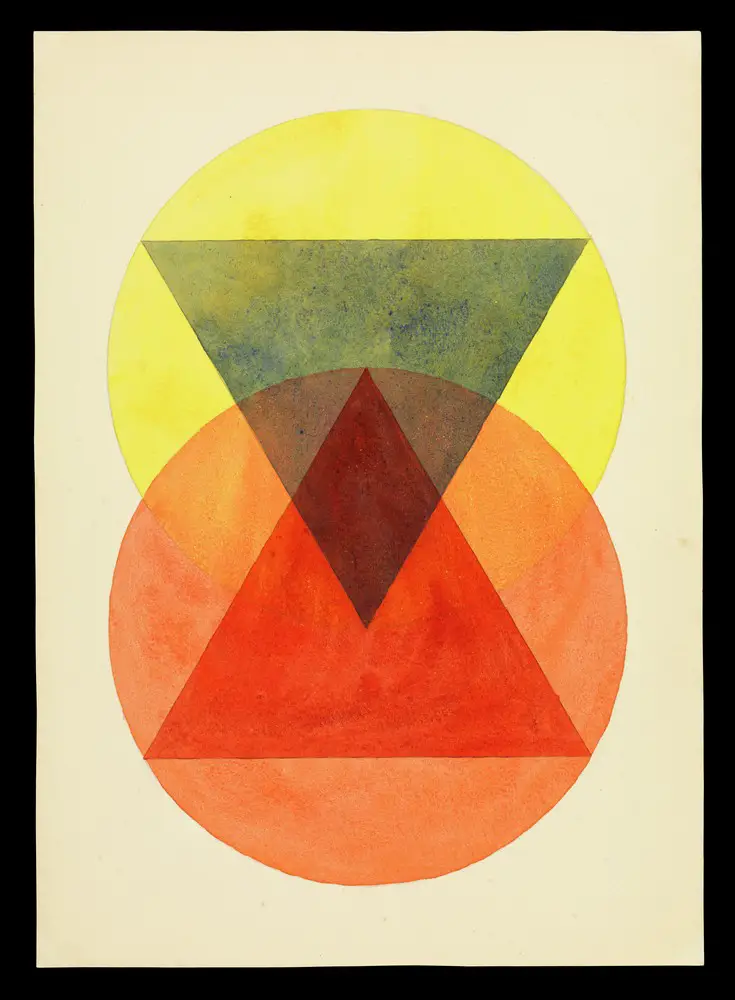Bauhaus Beginnings at Getty Research Institute, Post-war Buildings, Modern Architecture Design
Bauhaus Beginnings at Getty Research Institute
Modernist Architecture – 20th Century Built Environment + The International Style
Mar 21, 2019
Bauhaus Beginnings at the Getty Research Institute
Marking the 100th anniversary of the founding of the Bauhaus school, the exhibition explores the art, architecture, design, and philosophy of the school’s early years.
Accompanied by the online exhibition Bauhaus: Building the New Artist
At the Getty Research Institute, Getty Center Los Angeles
June 11 – October 13, 2019
Los Angeles – The Bauhaus is widely regarded as the most influential school of art and design of the 20th century. Marking the 100th anniversary of the school’s opening, Bauhaus Beginnings on view at the Getty Research Institute from June 11 through October 13, 2019 examines the founding principles of the landmark institution.
Joost Schmidt (German, 1893–1948), Form and Color Study, ca. 1929–1930, watercolor over graphite on paper. Los Angeles, Getty Research Institute, 860972:
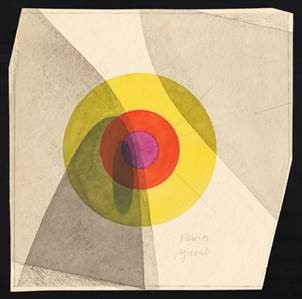
photograph courtesy of the Getty Research Institute
“For a century the Bauhaus has widely inspired modern design, architecture and art as well as the ways these disciplines are taught,” said Mary Miller, Director of the Getty Research Institute. “However, the story of Bauhaus is not just the story of its teachers or most famous students.
At the Getty Research Institute our archives are rich in rare prints, drawings, photographs, and other materials from some of the most famous artists to work at Bauhaus as well as students whose work, while lesser known, is extremely compelling and sometimes astonishing. Because of the breadth of our special collections we are able to offer a never-before-seen side of the Bauhaus along with more familiar images.”
Bergner Lena-Durchdringung for Paul Klee’s course:
Léna Bergner (German, 1906–1981)
Durchdringung (Penetration) for Paul Klee’s Course, ca. 1925–1932.
Watercolor and graphite on paper
Getty Research Institute, Los Angeles (850514)
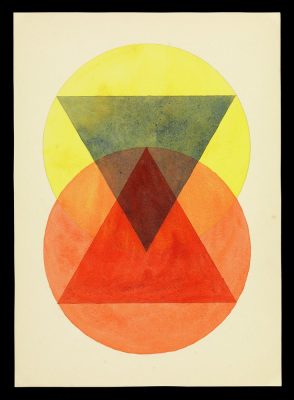
photo © Heirs of Léna Bergner, courtesy of the Getty Research Institute
The Bauhaus was a German school of art and design whose brief yet highly influential existence rendered it a key site in the development of a new modern vision for arts education. Established in 1919 after the end of World War I, the Bauhaus sought to erode distinctions between crafts and the fine arts through a program of study centered on theory and practical experience.
Drawn primarily from the Getty Research Institute’s collections, Bauhaus Beginnings, considers the school’s early dedication to spiritual expression and its development of a curriculum based on the elements deemed fundamental to all forms of artistic practice. The exhibition presents more than 250 objects including woodcut prints, drawings, collages, photography, textile samples, artists’ books, student notebooks, masters’ teaching aids and notes, letters, and ephemera from the school’s founding and early years.
Consemueller Erich-Cutting and Folding Exercise:
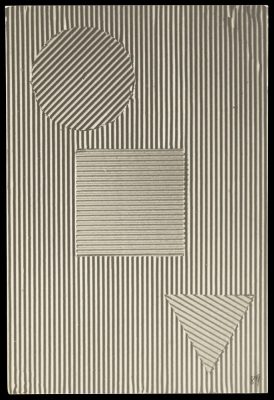
photo courtesy of the Getty Research Institute
Artists featured in the exhibition include teachers at the school such as Lyonel Feininger (American, 1871–1956), Walter Gropius (German, 1883–1969), Johannes Itten (Swiss, 1888–1967), Vassily Kandinsky (Russian, 1866–1944), Paul Klee (Swiss, 1879–1940), Gerhard Marcks (German, 1889–1981), László Moholy-Nagy (Hungarian, 1895–1946), and Oskar Schlemmer (German, 1888–1943).
Also included is student work by artists such as Erich Comeriner (German, 1907–1978), Friedl Dicker (Austrian, 1898–1944), Ludwig Hirschfeld-Mack (German, 1893–1965), Erich Mrozek (German, 1910–1993), and Margarete Willers (German, 1883–1977). The work of students who later became Bauhaus masters, including Josef Albers (German-American, 1888–1976), Herbert Bayer (Austrian, 1900–1985), Joost Schmidt (German, 1893–1948), and Gunta Stölzl (German, 1897–1983), is also featured in the show.
“The Bauhaus continues to spark imagination to this day,” said Maristella Casciato, Head of Architectural Collections at the Getty Research Institute. “By focusing on the vibrant community of artist teachers and student artists who built the school, through a variety of disparate materials, media, and ideologies, we are able to immerse ourselves in the unique, philosophical spirit that birthed some of the most enduring visual ideas of the modern era.”
The idea at the center of Bauhaus practice was Gesamtkunstwerk – the total work of art. In 1919 Walter Gropius (German, 1883–1969), widely circulated a manifesto, illustrated with a woodcut by Lyonel Feininger (American, 1871–1956), that announced his bold vision for the newly reformed, state-sponsored school of design and the model of education that would bridge the fine and applied arts.
In the text, on view in the exhibition, Gropius outlined how uniting various forms of practices, especially painting, sculpture, architecture, and design, would produce socially and spiritually gratifying works of art. Feininger’s woodcut of a preindustrial Gothic cathedral represented the total work of art, in which designers, artists, and artisans worked together in service of a spiritual goal.
Mrozek Erich-Studies for Vassily Kandinsky’s Farbenlehre:
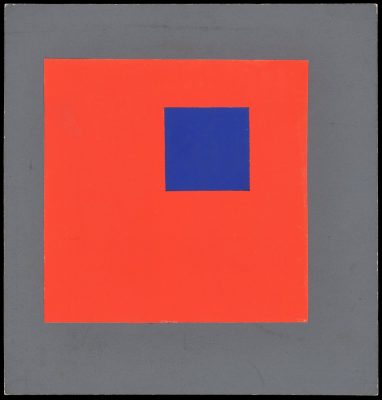
photo courtesy of the Getty Research Institute
In early 1920, an opportunity to realize a Gesamtkunstwerk “building of the future”—an ideal set forth in the Bauhaus manifesto—presented itself. Adolf Sommerfeld, a lumber mill owner, building contractor, and real estate developer specializing in timber structures commissioned Walter Gropius and Adolf Meyer (German, 1881–1929) to design a residence in the south of Berlin.
Gropius recognized the opportunity to bring the various Bauhaus workshops together in the design of the house, which took inspiration from a rustic log cabin. Students from the various workshops designed key elements of the interior, including a large stained-glass window above the staircase, carved wood ornaments, a large curtain, a set of wooden tables and chairs, light fixtures, radiator covers, rugs, and wall hangings.
The exhibition also explores the Preliminary Course at the Bauhaus which introduced all first-year students to what were considered the fundamental principles of color, form, and material. Various Bauhaus masters led these first-year studies: after Johannes Itten (Swiss, 1888–1967) initiated the Preliminary Course in the fall of 1920, László Moholy-Nagy (Hungarian, 1895–1946) and Josef Albers (German-American, 1888–1976) took over beginning in 1923.
These courses were supplemented by specialized theoretical seminars led by important Bauhaus faculty, including Gertrud Grunow (German, 1870-1944), Vassily Kandinsky (Russian, 1866–1944), Paul Klee (Swiss, 1879-1940), Joost Schmidt (German, 1893–1948), and Oskar Schlemmer (German, 1888–1943). Despite their many ideological differences, the masters agreed that a firm grounding in the principles of form and color achieved through practical exercises was crucial to the development of a new class of artists.
Masters’ teaching aids and student exercises in the exhibition demonstrate how color theory remained a central focus at the Bauhaus throughout the school’s fourteen-year existence. Committed to understanding the nature of colors, instructors and students produced countless graphic systems of wheels, triangles, grids, and spheres to examine how colors relate to one another.
Though women were admitted to the Bauhaus in relatively large numbers—in 1919, 59 out of 139 enrolled students were women—they did not enjoy equal status with the male students. Despite many objections, the majority of women students were pushed to study weaving rather than other media such as metal-working or architecture after completing the Preliminary Course.
The products produced in the weaving workshop were some of the most successful and financially viable at the Bauhaus. In the aftermath of the war, materials and funds for the school’s workshops were scarce, and the weavers used looms held over from Van de Velde’s School of Applied Arts to produce artisanal, yet popular, one-off objects such as stuffed animals and dolls.
Early Bauhaus master Helene Börner instructed weaving students to draw upon foundational theories of color and form developed in the Preliminary Course to produce innovative designs. When former student Gunta Stölzl (German, 1897–1983) became director of the weaving workshop in 1926, she argued that “a woven piece is always a serviceable object,” pushing production away from the loom and toward industrial modes. Bauhaus textiles were manufactured in bulk and sold widely, rendering them one of the most successful and broadly disseminated Bauhaus products. The exhibition features textile samples as well as watercolor and other studies for textiles.
Bauhaus Beginnings is curated by Maristella Casciato, with assistance from Gary Fox, Katherine Rochester, Alexandra Sommer, and Johnny Tran. The exhibition installation is designed in consultation with architect Tim Durfee.
To coincide with Bauhaus Beginnings, the Getty Research Institute will also present an online exhibition, Building the New Artist, which further explores the school’s history, theoretical underpinnings, and novel pedagogy. Launching on June 11, 2019, Building the New Artist will feature three interactive activities modeled after the exercises developed by Bauhaus instructors – a Vassily Kandinsky color survey, a Josef Albers paper cutting exercise, and an activity related to Oskar Schlemmer’s Triadic Ballet.
More information on both exhibitions will be available online at getty.edu/research.
###
IMAGES
Top: Joost Schmidt (German, 1893–1948), Form and Color Study, ca. 1929–1930, watercolor over graphite on paper. Los Angeles, Getty Research Institute, 860972
Lower: Léna Bergner (German, 1906–1981), Durchdringung (Penetration) for Paul Klee’s Course, ca. 1925–1932, Watercolor and graphite on paper, Getty Research Institute, Los Angeles (850514), © Heirs of Léna Bergner
The Getty Research Institute is an operating program of the J. Paul Getty Trust. It serves education in the broadest sense by increasing knowledge and understanding about art and its history through advanced research. The Research Institute provides intellectual leadership through its research, exhibition, and publication programs and provides service to a wide range of scholars worldwide through residencies, fellowships, online resources, and a Research Library.
The Research Library—housed in the 201,000-square-foot Research Institute building designed by Richard Meier—is one of the largest art and architecture libraries in the world. The general library collections (secondary sources) include almost 900,000 volumes of books, periodicals, and auction catalogues encompassing the history of Western art and related fields in the humanities. The Research Library’s special collections include rare books, artists’ journals, sketchbooks, architectural drawings and models, photographs, and archival materials.
Visiting the Getty Center
The Getty Center is open Tuesday through Friday and Sunday from 10 a.m. to 5:30 p.m., and Saturday from 10 a.m. to 9 p.m. Admission to the Getty Center is always free. Parking rates vary. No reservation is required for parking or general admission. Reservations are required for event seating and groups of 15 or more. Please call (310) 440-7300 (English or Spanish) for reservations and information. The TTY line for callers who are deaf or hearing impaired is (310) 440-7305. The Getty Center is at 1200 Getty Center Drive, Los Angeles, California.
Same-day parking at both Museum locations (Getty Center and Getty Villa) is available for one fee through the Getty’s Pay Once, Park Twice program. Visit the Museum Information Desk at the Center or the Villa to obtain a coupon good for same-day complimentary parking at the other site.
Additional information is available at www.getty.edu.
Location: 1200 Getty Center Drive, Los Angeles, California 90049-1685, USA
Oct 19 & 13, 2018
Eleven new grants include first projects in Cuba and Lebanon, as well as the famous Gateway Arch in St. Louis, Missouri
School of Ballet – Aerial view
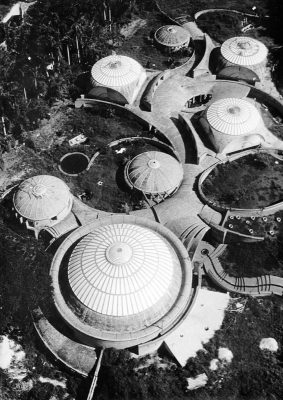
photo © Vittorio Garatti Archive
National Schools of Art of Havana, Cuba:
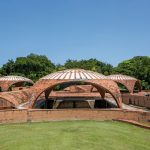
photo : Leonardo Finott
Salk Institute for Biological Studies:
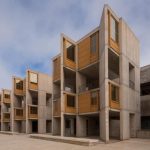
photo by Elizabeth Daniels
Oscar Niemeyer’s Permanent International Fairground in Tripoli, Lebanon:
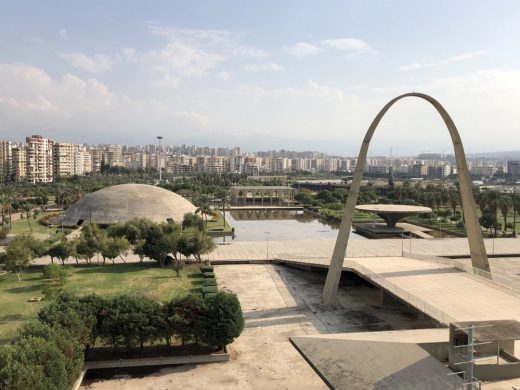
photo © UNESCO Beirut Office
Getty Foundation Keeping it Modern Grants for 2017
Bauhaus Building One of Twelve Recipients of Getty Fou3ndation’s Keeping It Modern Grants
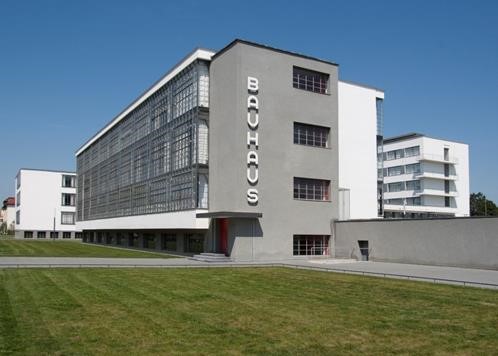
photo © Bauhaus Dessau Foundation, photo © Yvonne Tenschert
Getty Foundation Keeping it Modern 2017 Grants
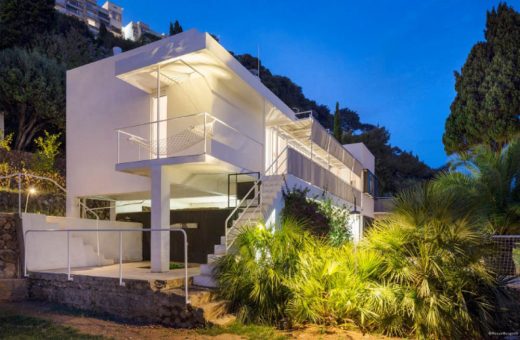
Villa E-1027, Cap Moderne, photograph Manuel Bougot www.manuelbougot.com. 2016
Modern Architecture Conservation Grants 2016 – Keeping It Modern by the Getty Foundation, 2016
Modern Architecture – Major Modernist Buildings
Post-war Architecture
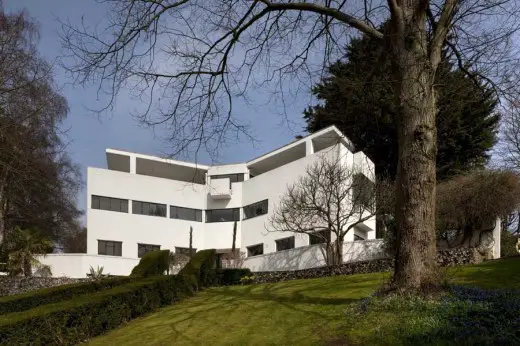
photo : Morley von Sternberg
Post-war Architecture
These Modern buildings
Boston City Hall, Boston, Massachusetts (architects: Kallmann, McKinnell, & Knowles);
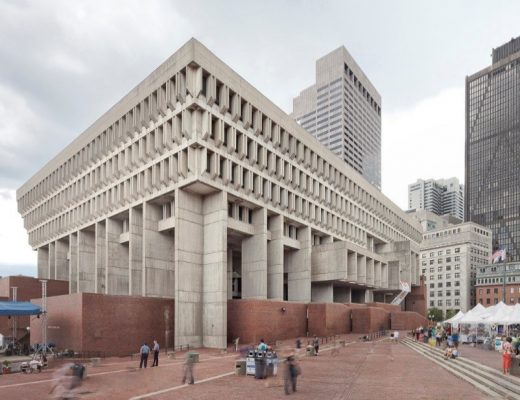
photo © Naquib Hossain/Dotproduct Photography
Boston City Hall Building
Sidi Harazem Thermal Bath Complex, Sidi Harazem, Morocco (architect: Jean-François Zevaco);
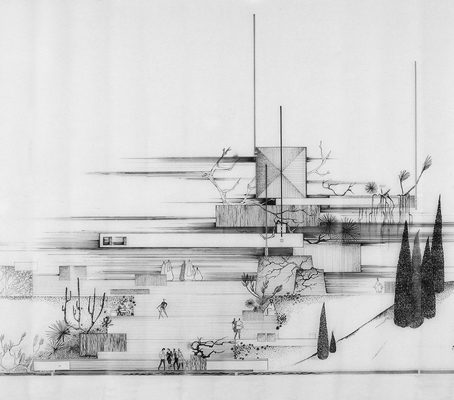
Image © Frac Centre-Val de Loire Collection.
Sidi Harazem Thermal Bath Complex Building
Modern English house – one of the first Modern houses in England
Comments / photos for the Bauhaus Beginnings at Getty Research Institute 2019 page welcome

